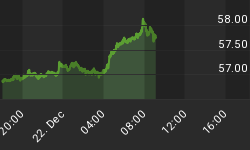The weak close in the EUR USD has this market in a position to breech the 1.3088 support and send this market to at least 1.2945 over the near term. The current weakness can be attributed to a combination of a weakening chart pattern and loss of confidence by investors with the European Central Bank policymakers.
Currently the EUR USD is finding support at 50% of the recent rally from 1.2456 to 1.3737. This support price is 1.3097. This weak close has the market in a position to break even further to 1.2945 once the first support is violated. The swing chart is also beginning to indicate building downside pressure as this chart has formed a secondary lower top and lower bottom. This is the classic definition of a down trend.
Fundamentally, investors are beginning to lose confidence in the European Central Bank policymaker's ability to reach a conclusive decision on interest rates at its upcoming meeting on May 7. Recently several members have been uncharacteristically using the media to talk their positions on the future of Euro Zone interest rates. A schism seems to be developing between those who want to keep the benchmark rate above 1.0% and those who want to allow it to drift as low as possible.
Those who want to keep interest rates above 1.0% fear that interbank lending will dry up if rates are allowed to fall too low. The thought is that banks would have no incentive to lend to each other. The policymakers who are willing to let interest rates continue to seek their own level feel that achieving low rates will provide much needed stimulus to the economy.
Investors are starting to feel that policymaker egos will cloud their ability to reach the right decision regarding the future of interest rates and any efforts by the ECB to pull the Euro Zone economy out of the current recession will fail.
Thursday's news that Euro Zone Industrial Output fell by a record 18.4% year to year in February emphasized the importance of the upcoming ECB meeting. Inflation has fallen to an all-time low and clearly the Euro Zone economy is deteriorating rapidly. Interest rates have to fall further but the ECB will also have to implement more aggressive non-standard means to stabilize the economy. So far the consensus is for the purchase of corporate bonds, but knowing the personalities involved in the decision process, I am almost certain that the ECB's quantitative easing plans are still up in the air.















